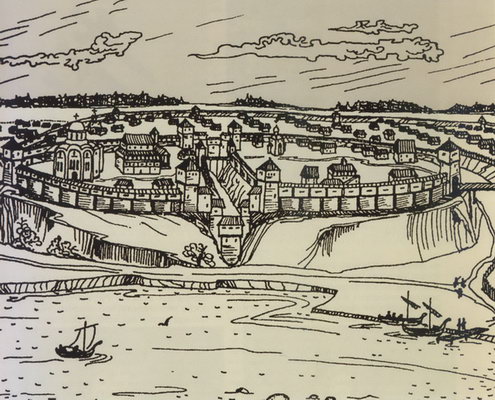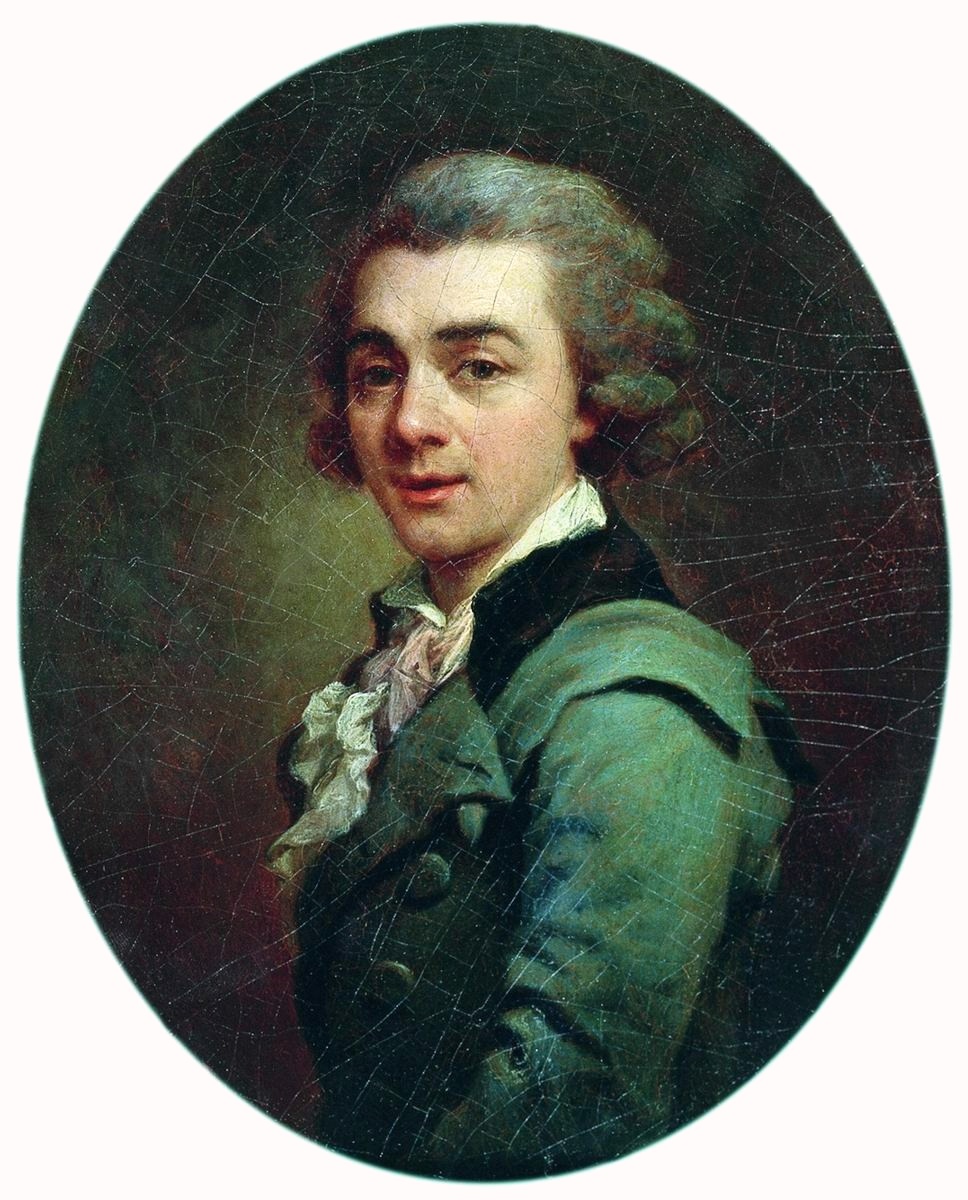|
Mark Petrokovets
Mark Iosifovich Petrokovets (; 10 April 1937 – 18 November 2006) was a Soviet and Belarusian scientist prominent in the fields of tribology, the study of frictional interaction between surfaces, and well known for his classical influential handbooks "Introduction to Tribology" and "Friction and wear in polymer-based materials". Biography Mark Petrokovets was born to a Jewish family in Gomel, Belarus, on April 10, 1937. He graduated with MS in mathematics from Francysk Skaryna Gomel State University in 1959. He spent 3 years as a high school teacher in Brest region. In 1963, he was invited to Gomel Institute of Mathematics and Computer Science (it was later renamed to Metal–Polymer Research Institute of National Academy of Sciences of Belarus), where he spent all his life, working as a lab technician, senior mechanic, junior, senior, lead and chief researcher. He obtained PhD degree from Latvian Academy of Sciences in 1970. The main focus of his research was the mechanics ... [...More Info...] [...Related Items...] OR: [Wikipedia] [Google] [Baidu] |
Gomel
Gomel (, ) or Homyel (, ) is a city in south-eastern Belarus. It serves as the administrative centre of Gomel Region and Gomel District, though it is administratively separated from the district. As of 2025, it is the List of cities and largest towns in Belarus, second-largest city in Belarus, with 501,193 inhabitants. Etymology There are at least six narratives of the origin of the city's name. The most plausible is that the name is derived from the name of the stream Homeyuk, which flowed into the Sozh river, river Sozh near the foot of the hill where the first settlement was founded. Names of other Belarusian cities are formed along these lines: for example, Polotsk from the river Palata (river), Palata, and Vitebsk from the river Vitsba. The first appearance of the name, as "Gomy", dates from 1142. Up to the 16th century, the city was mentioned as Hom', Homye, Homiy, Homey, or Homyi. These forms are tentatively explained as derivatives of unattested ''*gomŭ'' of uncertain ... [...More Info...] [...Related Items...] OR: [Wikipedia] [Google] [Baidu] |
Brest, Belarus
Brest, formerly Brest-Litovsk and Brest-on-the-Bug, is a city in south-western Belarus at the border with Poland opposite the Polish town of Terespol, where the Bug (river), Bug and Mukhavets rivers meet, making it a border town. It serves as the administrative center of Brest Region and Brest District, though it is administratively separated from the district. it has a population of 346,061. Brest is one of the oldest cities in Belarus and a historical site for many cultures, as it hosted important historical events, such as the Union of Brest and Treaty of Brest-Litovsk. Furthermore, the Brest Fortress was recognized by the Soviet Union as a Hero Fortress in honour of the defense of Brest Fortress in June 1941. In the High Middle Ages, the city often passed between Poland, the principalities of Kievan Rus', and the Grand Duchy of Lithuania. From the Late Middle Ages, the city was part of Lithuania, which later became a part of the Polish–Lithuanian Commonwealth from 1569. ... [...More Info...] [...Related Items...] OR: [Wikipedia] [Google] [Baidu] |
1937 Births
Events January * January 1 – Anastasio Somoza García becomes President of Nicaragua. * January 5 – Water levels begin to rise in the Ohio River in the United States, leading to the Ohio River flood of 1937, which continues into February, leaving 1 million people homeless and 385 people dead. * January 15 – Spanish Civil War: The Second Battle of the Corunna Road ends inconclusively. * January 23 – Moscow Trials: Trial of the Anti-Soviet Trotskyist Center – In the Soviet Union 17 leading Communists go on trial, accused of participating in a plot led by Leon Trotsky to overthrow Joseph Stalin's regime, and assassinate its leaders. * January 30 – The Moscow Trial initiated on January 23 is concluded. Thirteen of the defendants are Capital punishment, sentenced to death (including Georgy Pyatakov, Nikolay Muralov and Leonid Serebryakov), while the rest, including Karl Radek and Grigory Sokolnikov are sent to Gulag, labor camps and later murdered. They were i ... [...More Info...] [...Related Items...] OR: [Wikipedia] [Google] [Baidu] |
People From Gomel
The term "the people" refers to the public or common mass of people of a polity. As such it is a concept of human rights law, international law as well as constitutional law, particularly used for claims of popular sovereignty. In contrast, a people is any plurality of persons considered as a whole. Used in politics and law, the term "a people" refers to the collective or community of an ethnic group or nation. Concepts Legal Chapter One, Article One of the Charter of the United Nations states that "peoples" have the right to self-determination. Though the mere status as peoples and the right to self-determination, as for example in the case of Indigenous peoples (''peoples'', as in all groups of indigenous people, not merely all indigenous persons as in ''indigenous people''), does not automatically provide for independent sovereignty and therefore secession. Indeed, judge Ivor Jennings identified the inherent problems in the right of "peoples" to self-determination, as i ... [...More Info...] [...Related Items...] OR: [Wikipedia] [Google] [Baidu] |
Nanotechnologists
Nanotechnology is the manipulation of matter with at least one dimension sized from 1 to 100 nanometers (nm). At this scale, commonly known as the nanoscale, surface area and quantum mechanical effects become important in describing properties of matter. This definition of nanotechnology includes all types of research and technologies that deal with these special properties. It is common to see the plural form "nanotechnologies" as well as "nanoscale technologies" to refer to research and applications whose common trait is scale. An earlier understanding of nanotechnology referred to the particular technological goal of precisely manipulating atoms and molecules for fabricating macroscale products, now referred to as molecular nanotechnology. Nanotechnology defined by scale includes fields of science such as surface science, organic chemistry, molecular biology, semiconductor physics, energy storage, engineering, microfabrication, and molecular engineering. The associated rese ... [...More Info...] [...Related Items...] OR: [Wikipedia] [Google] [Baidu] |
Soviet Scientists
Polymaths *Karl Ernst von Baer, polymath naturalist, formulated the geological Baer's law on river erosion and embryological Baer's laws, founder of the Russian Entomological Society, co-founder of the Russian Geographical Society *Alexander Borodin, chemist and composer, author of the famous opera ''Prince Igor'', discovered Borodin reaction, co-discovered Aldol reaction *Alexander Chizhevsky, interdisciplinary scientist, biophysicist, philosopher and artist, founder of heliobiology and modern air ionification, Russian cosmist *Johann Gottlieb Georgi, naturalist, chemist, mineralogist, ethnographer and explorer, the first to describe omul fish of Lake Baikal, Baikal, published the first full-scale work on ethnography of indigenous peoples of Russia *Mikhail Lomonosov, polymath scientist, artist and inventor; founder of the Moscow State University; proposed the law of conservation of matter; disproved the phlogiston theory; invented coaxial rotor and the first helicopter; invented ... [...More Info...] [...Related Items...] OR: [Wikipedia] [Google] [Baidu] |
Belarusian Scientists
Belarusian may refer to: * Something of, or related to Belarus * Belarusians, people from Belarus, or of Belarusian descent * A citizen of Belarus, see Demographics of Belarus * Belarusian language * Belarusian culture * Belarusian cuisine * Byelorussian Soviet Socialist Republic See also * * Belorussky (other) Belorussky (masculine), Belorusskaya (feminine), or Belorusskoye (neuter) may refer to: * Belorussky Rail Terminal, a rail terminal in Moscow, Russia * Belorussky (settlement), a settlement in Pskov Oblast, Russia * Belorusskaya (Koltsevaya line), ... {{disambig Language and nationality disambiguation pages ... [...More Info...] [...Related Items...] OR: [Wikipedia] [Google] [Baidu] |
Nanometer
330px, Different lengths as in respect to the Molecule">molecular scale. The nanometre (international spelling as used by the International Bureau of Weights and Measures; SI symbol: nm), or nanometer (American spelling Despite the various list of dialects of English, English dialects spoken from country to country and within different regions of the same country, there are only slight regional variations in English orthography, the two most notable variati ...), is a units of measurement, unit of length in the International System of Units (SI), equal to one billionth (short scale) or one thousand million (long scale) of a metre, meter (0.000000001 m) and to 1000 picometres. One nanometre can be expressed in scientific notation as 1 × 10−9 m and as m. History The nanometre was formerly known as the "''millimicrometre''" – or, more commonly, the "''millimicron''" for short – since it is of a micrometre, micrometer. It was often de ... [...More Info...] [...Related Items...] OR: [Wikipedia] [Google] [Baidu] |
Society Of Tribologists And Lubrication Engineers
The Society of Tribologists and Lubrication Engineers (STLE) is an American non-profit technical society for the tribology and lubrication engineering sectors worldwide. Its offices are in Park Ridge, Illinois. Established in 1944 as the American Society of Lubrication Engineers (ASLE), the STLE is now one of the world's largest associations solely dedicated to the advancement of the field of tribology. The STLE currently has over 13,000 members. An official STLE journal, ''Tribology Transactions'', is published by Taylor and Francis and the society is also affiliated with ''Tribology Letters'', published by Springer Springer or springers may refer to: Publishers * Springer Science+Business Media, aka Springer International Publishing, a worldwide publishing group founded in 1842 in Germany formerly known as Springer-Verlag. ** Springer Nature, a multinationa .... The STLE also publish a monthly magazine, ''Tribology and Lubrication Technology''. References {{Authority co ... [...More Info...] [...Related Items...] OR: [Wikipedia] [Google] [Baidu] |
Latvian Academy Of Sciences
The Latvian Academy of Sciences (, ) is the official science academy of Latvia and is an association of the country's foremost scientists. The academy was founded as the ''Latvian SSR Academy of Sciences'' (). It is located in Riga. The current president of the academy is Ivars Kalviņš. Building The Academy of Sciences edifice was built after World War II, between 1951 and 1961, collecting the necessary financing from the newly established kolkhozes in Latvia and – as further expenses increased, collecting the finances as "voluntary donations" deducted from the salaries of the Latvian rural population. The building is decorated with several hammer and sickle symbols as well as Latvian folk ornaments and motifs. The spire was originally decorated with a wreath and a five pointed star, which was removed after Latvia regained independence in 1991. Being tall, it was the first skyscraper in the republic and was the tallest building until the construction of the Swedbank ... [...More Info...] [...Related Items...] OR: [Wikipedia] [Google] [Baidu] |
Belarusians
Belarusians ( ) are an East Slavs, East Slavic ethnic group native to Belarus. They natively speak Belarusian language, Belarusian, an East Slavic language. More than 9 million people proclaim Belarusian ethnicity worldwide. Nearly 7.99 million Belarusians reside in Belarus, with the United States and Russia being home to more than 500,000 Belarusians each. The majority of Belarusians adhere to Eastern Orthodoxy. Name During the Soviet era, Belarusians were referred to as ''Byelorussians'' or ''Belorussians'' (from Byelorussian Soviet Socialist Republic, Byelorussia, derived from Russian "Белоруссия"). Before, they were typically known as ''White Russians'' or ''White Ruthenians'' (from White Russia or White Ruthenia, based on "Белая Русь"). Upon Belarusian independence in 1991, they became known as ''Belarusians'' (from Belarus, derived from "Беларусь"), sometimes spelled as ''Belarusans'', ''Belarussians'' or ''Belorusians''. The term ''W ... [...More Info...] [...Related Items...] OR: [Wikipedia] [Google] [Baidu] |




